
A heart for bees: José Manuel Pérez and his Atego 1321 4x4
Story
The world's bee population is diminishing. José Manuel Pérez, a bee-keeper from Aragon is fighting this and contributing to biodiversity. Always on-hand: his Atego 1321 4x4.
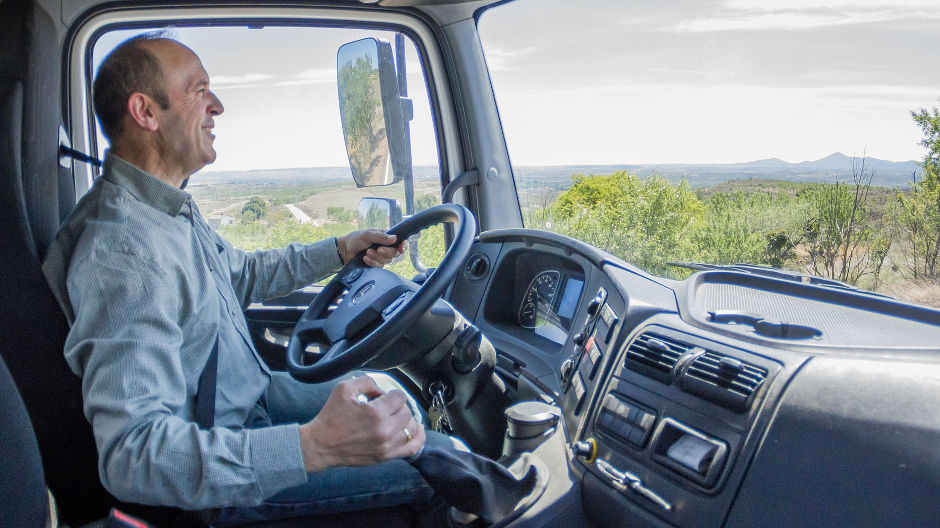
During harvest time from March to October, José Manuel Pérez drives about 180 kilometres a day behind the wheel of his Atego 1321 4x4.
The loud buzzing that thousands and thousands of bees generate with their wings and stomachs would cause anybody else's heart to pound. But not José Manuel Pérez. The apiarist from Aragon (Spain) doesn't even seem to notice that only fine netting is providing any protection between his face and dozens of bee stings. Quietly and fully concentrated he approaches the beehive and switches on the smoke device first of all. The bees see the smoke as a threat, causing them to prepare to flee the beehive. They fill their honey stomachs with food reserves and are distracted to such an extent that they hardly notice the apiarist. Carefully, José Manuel opens the lid and takes out a whole honeycomb with honey and bees. He nods in satisfaction: the worker bees have created a wax lid over the cells filled with mature honey so as to seal off and protect the honey during storage. In a few days he will return to harvest the honey.
This article contains additional material (videos, images and reports etc.) for registered RoadStars members. In order to experience the article to the full, you need to log in with your RoadStars account or register for one free of charge.
Become a RoadStar and gain access to exclusive content and campaigns!
Login for RoadStars members
Not yet a member? Join RoadStars now
Obtain exclusive access to exciting events and activities which only RoadStars can offer.
Join RoadStarsResponsibility for 650 bee populations.
"Bees sweeten our lives," says José Manuel. 20 years ago
he founded Apihuecha, a company specialising in keeping and selling
bees. "It is tiring, but exciting work," he says. His apiary
consists of 650 beehives with around 30 million bees. José Manuel
operates a nomadic apiary which means that the beehives are
continually driven by truck to new locations where the blooming period
has just begun. "The temperature plays an important role,"
he explains. Bees can only be transported when the temperature does
not exceed 14 degrees Celsius. That is why, in summer, transports are
always at night.
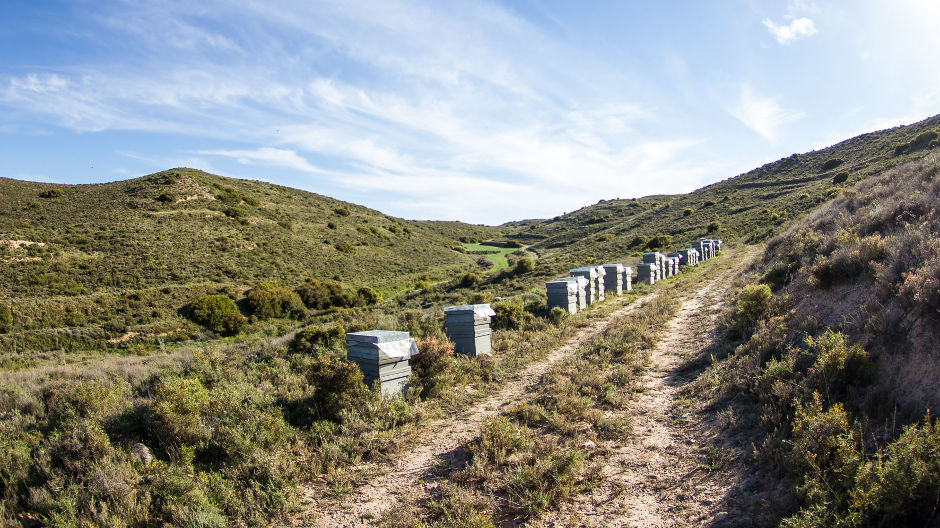
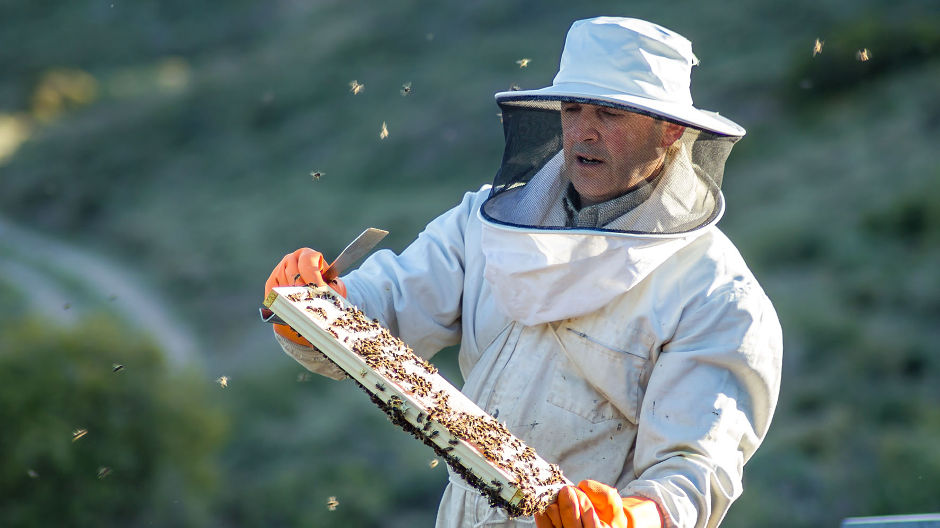
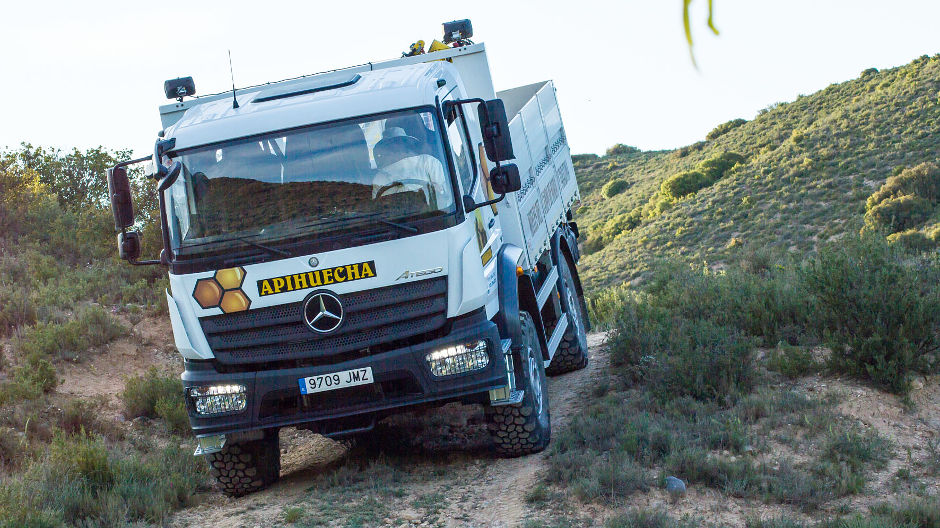
Harvest time with the Atego 1321 4x4.
José Manuel transports the full honeycombs and the beehives on his Atego 1321 4x4. A beehive can weigh up to 150 kilogrammes. "I park the Atego about 50 metres away from the beehive. It's not a problem to drive over difficult terrain thanks to the all-wheel drive." José Manuel needs the Atego from March until October – harvest time – and doesn't drive more than 180 kilometres a day with it. Normally, José Manuel doesn't need the full payload capacity of five tonnes because he doesn't like to stack the beehives on top of each other. Furthermore, his crane is designed so that only one beehive can be lifted at once.
“I park the Atego about 50 metres away from the beehive. I can drive over difficult terrain without a problem thanks to the all-wheel drive.”
José Manuel Pérez, founder of Apihuecha
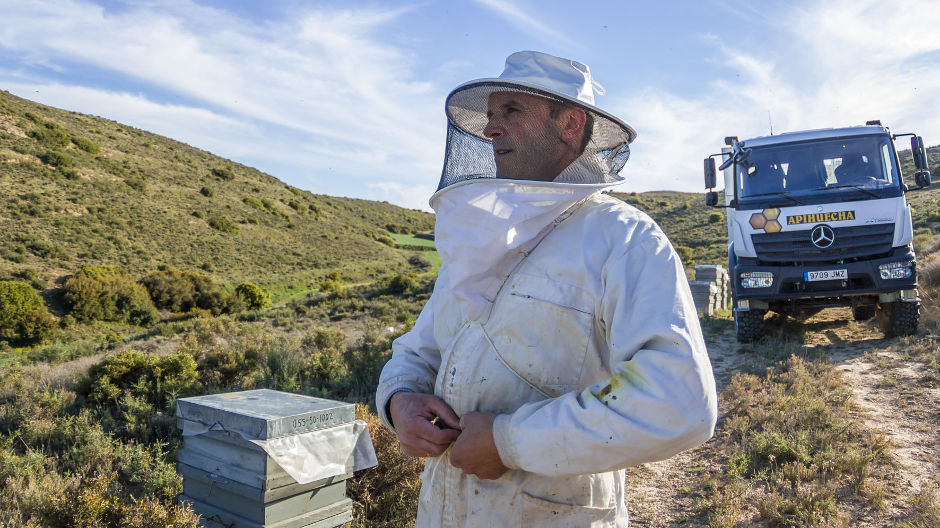
Protective clothing is compulsory when inspecting the bee populations.
30 tonnes of honey every year.
At present José Manuel harvests 30 tonnes of genuine honey a year. His bees collect throughout the region around Borja and Tarazona – from rosemary, thyme and oak fields. Accordingly, the honey types differ in colour, taste and consistency. As soon as the honeycombs arrive at the company premises, María José Lahuerta, José Manuel's wife takes over the ensuing work process. With precise movements, she places every individual honeycomb onto a machine which removes the wax lids. After that the honeycombs are spun. After the sieving process, the finished honey is then poured into barrels.
José Manuel still remembers his first contact with bees. Then he was
only eight years old: "I was stung terribly, but I didn't care! I
was just fascinated by the bees and their organisation." Today,
40 years later, he can claim with pride that he has contributed to the
biodiversity of bees that are threatened by pesticides the world
over.
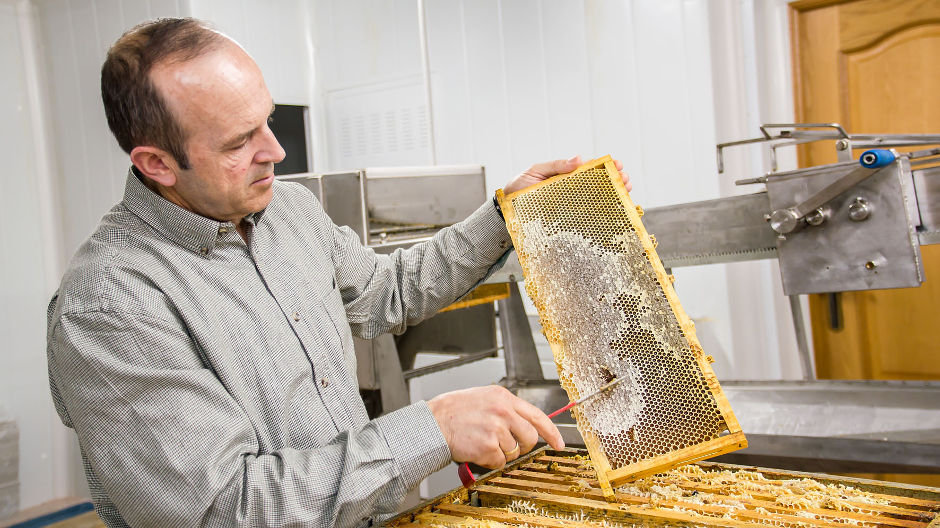
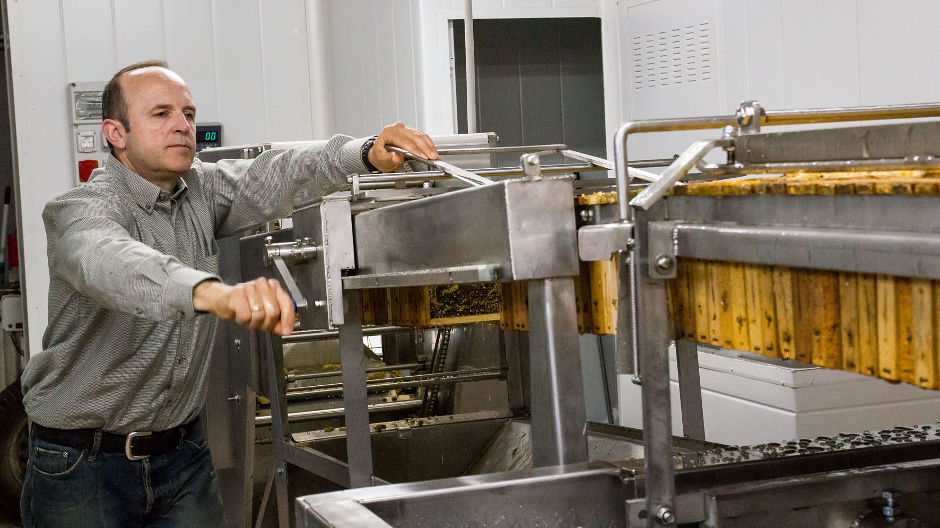
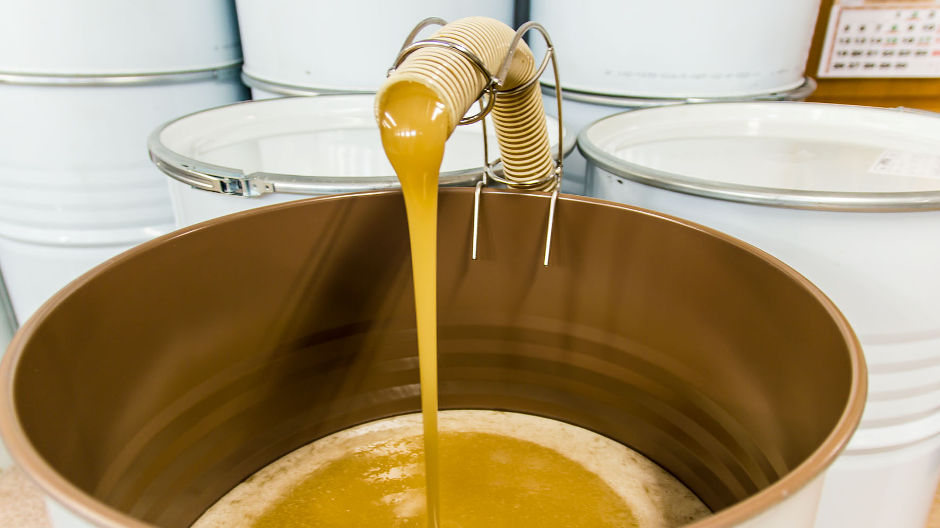
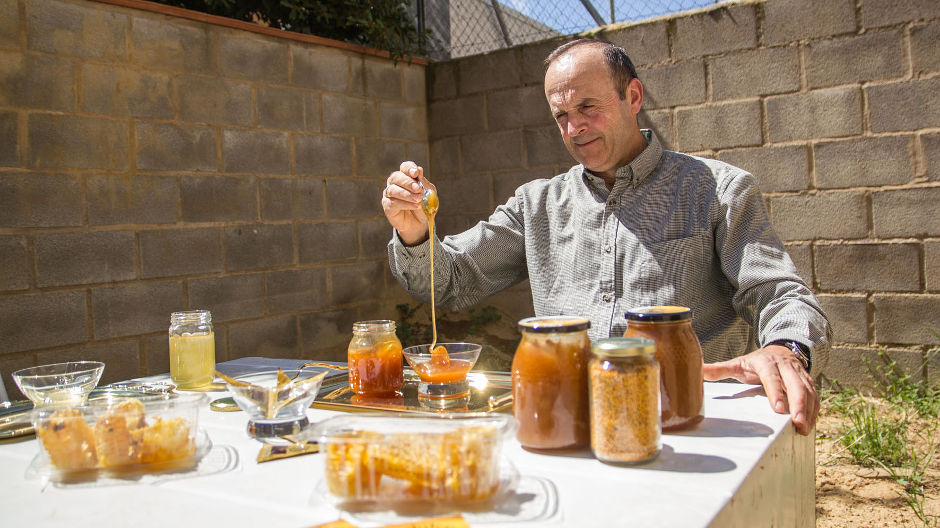
Buzzword bees.
Bees sweeten our lives. More than a third of the plant types which ensure human food are pollinated by bees. These social insects have been living on our planet for a hundred million years and guarantee the biological diversity and equilibrium of our eco-systems.
Wild bee's nests do not make as much honey as artificial beehives.
In their natural habitat, the worker bees prevent the queen bee from
laying more eggs once the honeycombs are full. In the man-made
beehives the apiarist provides additional honeycombs so that the queen
bee continues to lay eggs and the worker bees produce more honey.
Normally, only a third of the honey is removed from the beehive, so
that the bees requirements are covered.
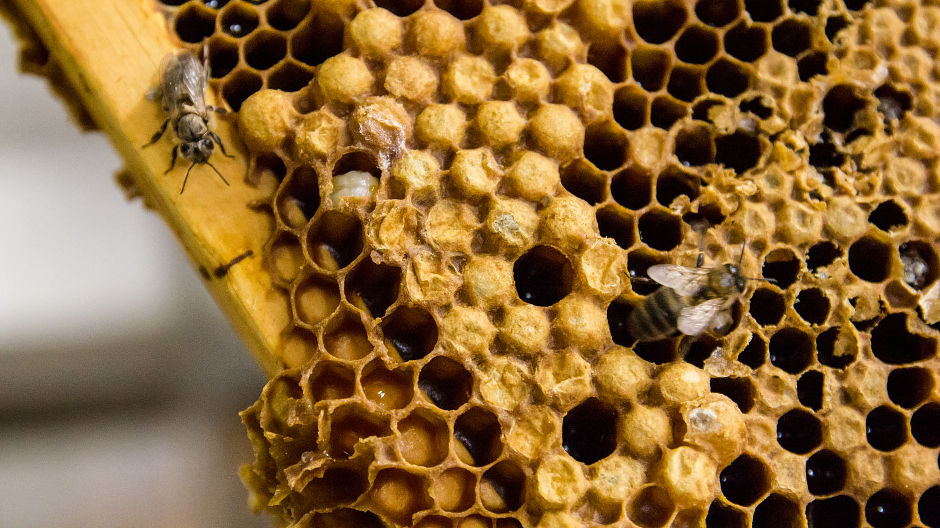
Apihuecha's stocks comprise around 30 million bees.
Pesticides are threatening the bees.
For a decade an unusually high number of bee populations have been
dying worldwide. Experts believe that this phenomenon is due to
increased use of pesticides. This alarming decline in the global bee
population has even caused the World Health Organisation (WHO) and the
European Union to act. In the USA, bees have been declared an
endangered species. "If the bee disappeared off the surface of
the globe, then man would have only four years of life left,"
Albert Einstein supposedly said. If that is true, then our future lies
in the hands of people like José Manuel Pérez.
Photos and video: Begoña Tremps




Comment
Please log in to post a comment.
4 comments
Und immer an die geleistete Arbeit der Bienen denken wenn wir Honig essen.
Und immer an die geleistete Arbeit der Bienen denken wenn wir Honig essen.